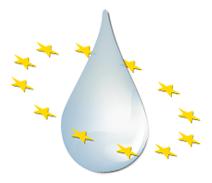Water Framework Directive

The Water Framework DirectiveDirective 2000/60/EC to establish a framework for water policy and management in Europe commits European Union member states to achieve good ecological status of all inland and coastal water bodies by 2015. The Water Framework Directive changed European water management fundamentally. First, management is coordinated at the level of entire river basins - countries need to cooperate now in cross-border basins. Second, assessment accounts for ecological qualityDistance of biota and ecological conditions to undisturbed references and includes the status of aquatic animal and plant communities: phytoplankton, phytobenthos and macrophytes, benthic invertebrates and fish. And third, the ecological status is expressed as the deviation of the current conditions from undisturbed reference conditionsThe natural threshold or benchmark that represents the high ecological status .
Monitoring programmes account for these aspects and were developed and published by 2007. At present, river basin management plansOutlines restoration goals to be achieved and the measures required. are being finalised and prepared for publication at the end of 2009. In parallel, programmes of measures are developed to deliver environmental objectives in each river basin district.
Despite considerable progress that has been made since 2000, significant knowledge gaps still hinder implementation. Monitoring schemes still do not cover all relevant organism groups and lack for some regions. These gaps also affect the European intercalibration exercise that aims at ensuring the comparability of monitoring results.